M4/3 System - Lens Evaluation
(16th August 2021)
'Quick & Dirty' - 3 Front
Mounted Teleconverters
Compared.
Purpose:
I was asked by a forum member
which front mounted telephoto Teleconverter would perform best when
attached to the inexpensive Olympus 75-300 Mk2 micro four thirds lens.
My test method was totally non-scientific. Hence 'Quick & Dirty' in the
article title!
The Camera & Setup:
Olympus Em1-Mk2, ISO800, F7.1, S-AF
(contrast detect autofocus), Stabilisation OFF, -0.7 EV,
Resting on table, 2 second Electronic Shutter delay.
Lenses Used:
Olympus 75-300 Mk2 (with & without digital 2x).
Panasonic 100-400 (used solely for a baseline comparison).
The Teleconverter Line-up:
Raynox 2020 Pro 2.2x
, Nikon TC-E17ED 1.7x. Olympus 1.7x.
| LENS |
Thread Size |
Adapter Required |
Weight |
| Panasonic PL100-400 |
72mm (Front) |
N/A |
943g. |
| Olympus 75-300 Mk2 |
58mm (Front) |
As specified below... |
419g. |
| Raynox TC |
62mm (Rear) |
58-62mm Step-Up |
282g. |
| Olympus TC |
55mm (Rear) |
58-55mm Step-Down |
255g. |
| Nikon TC |
60mm (Rear) |
58-60mm Step-Up |
631g. |
The Target.
The target image was printed onto A4 glossy paper
using my old office printer - Admittedly not Ideal !
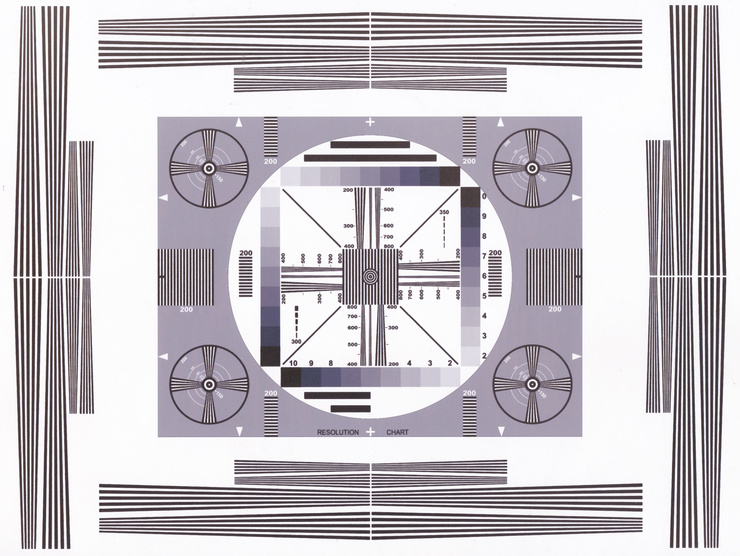 |
|
This
Target was printed onto A4 glossy paper using my old
office printer (Not Ideal!). |
|
The first set of images
below are to show a comparison of magnification:
Note: These are the full images taken and resized to
740 pixels across to permit easy size comparison.
Distance to Target
was 10 strides, = approximately 9 metres / 29 feet.
...and as you can see I forgot to set the white balance!
|
|
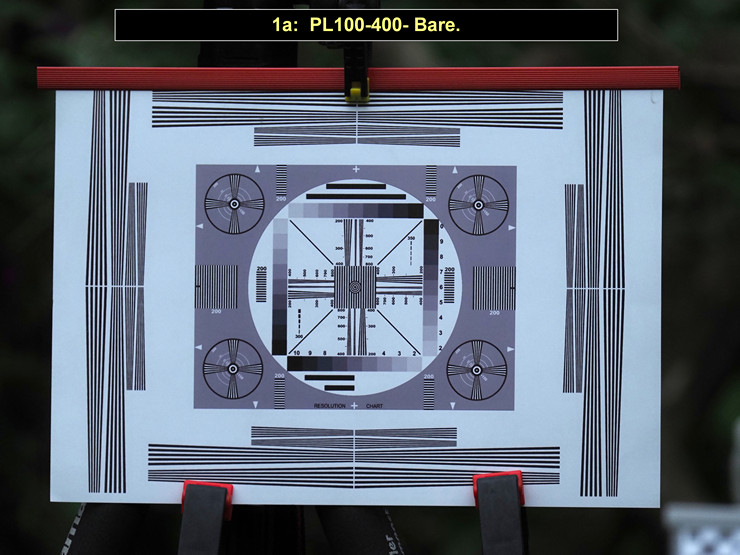 |
|
1a) Above:
PL100-400 'Bare'. |
 |
|
1b) Above:
PL100-400
+ in camera 2x
Digital Zoom |
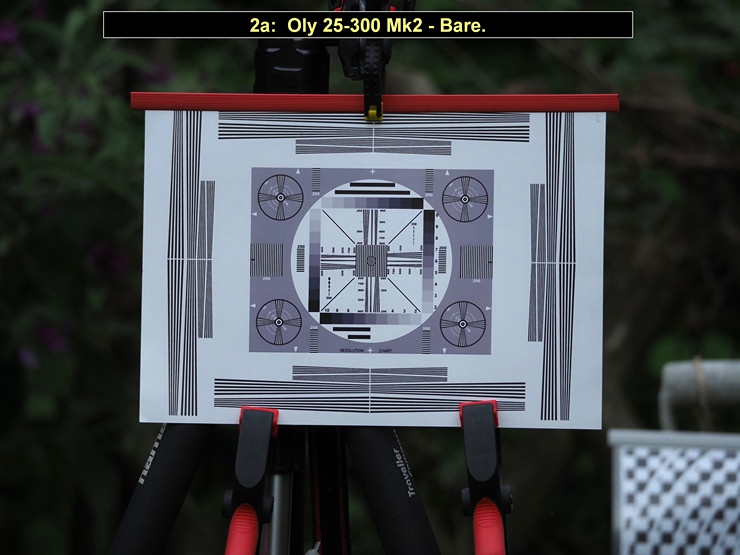 |
|
2a) Above: Olympus
75-300 Mk2 'Bare'. |
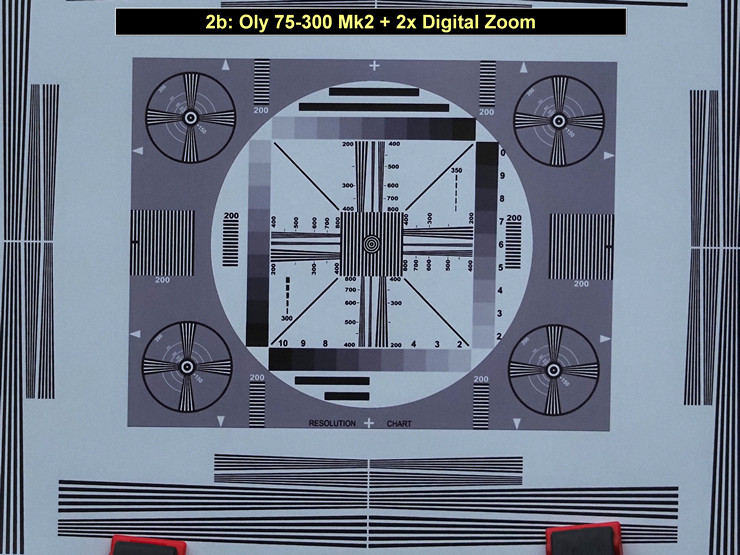 |
|
2b) Above: Olympus
75-300 Mk2
+ in camera 2x
Digital Zoom. |
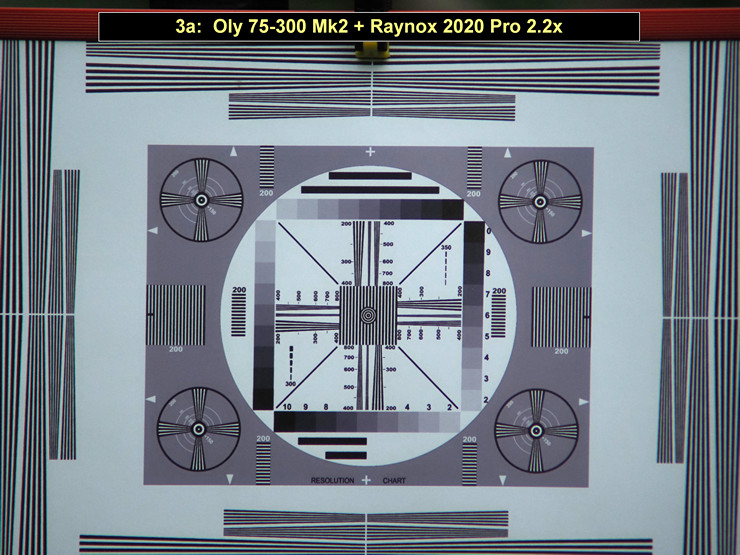 |
|
3a) Above: Olympus
75-300 Mk2 + Raynox 2020 Pro 2.2x TC. |
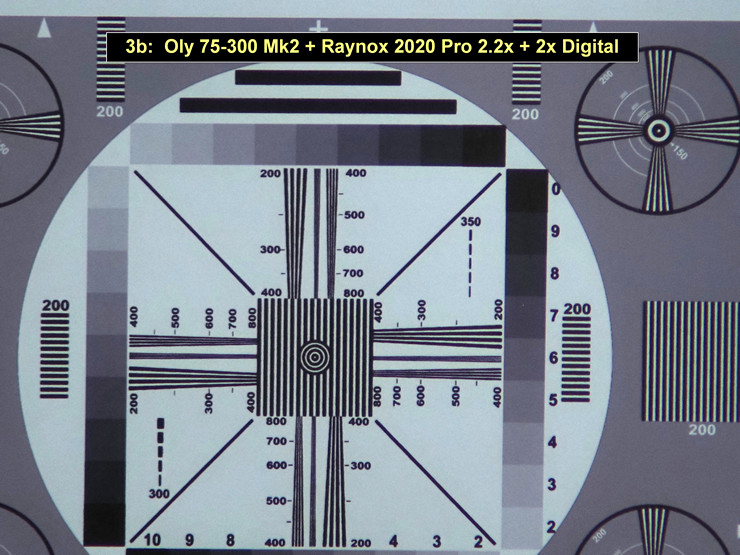 |
|
3b) Above: Olympus
75-300 Mk2 + Raynox 2020 Pro 2.2x TC +
in camera 2x
Digital Zoom. |
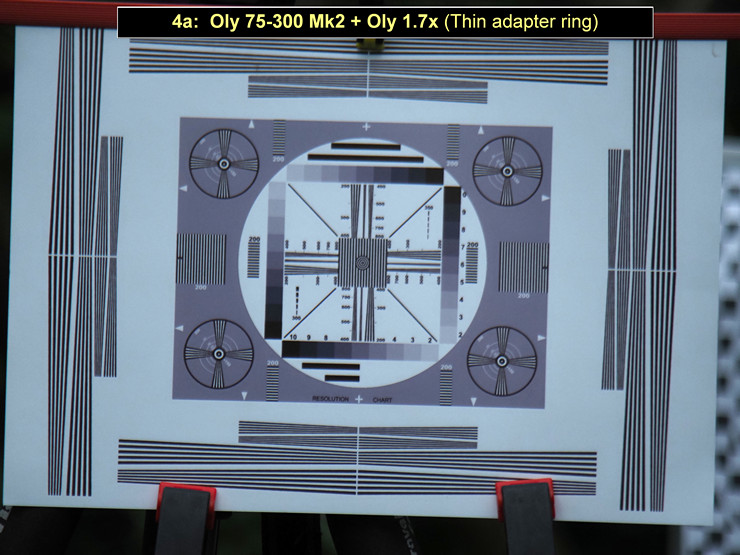 |
|
4a) Above: Olympus
75-300 Mk2 + Olympus 1.7x TC (using a Thin coupling adapter
ring). |
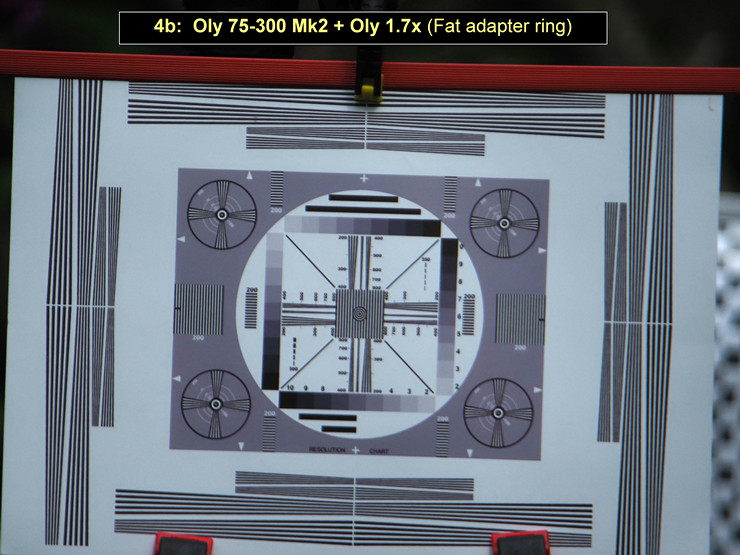 |
|
4b) Above: Olympus
75-300 Mk2 + Olympus 1.7x TC (using a Fat coupling adapter
ring). |
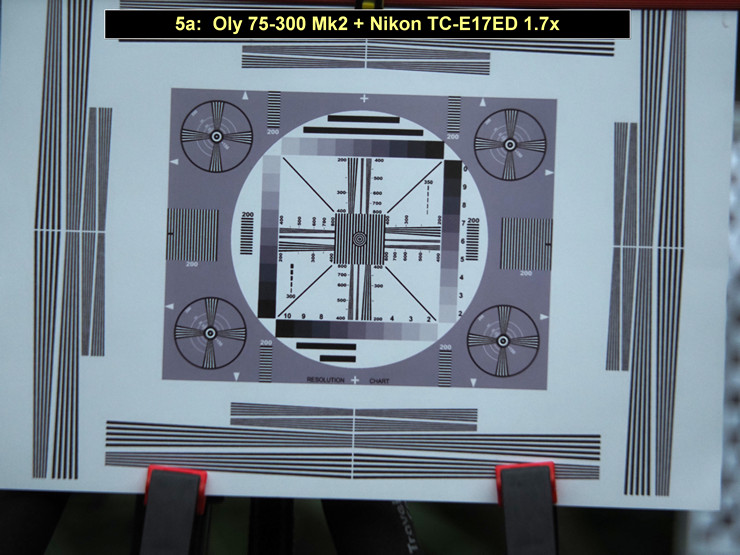 |
|
5a) Above: Olympus
75-300 Mk2 + Nikon TC-E17ED 1.7x TC. |
 |
|
5b) Above: Olympus
75-300 Mk2 + Nikon TC-E17ED 1.7x TC +
in camera 2x
Digital Zoom. |
The images below are full
resolution centre crops ...
This full size crop directly below is
400dpi scan of the test target. Do take note of the paper
texture and 'wavy' straight lines, as this will affect
perception of the image test results shown further below.
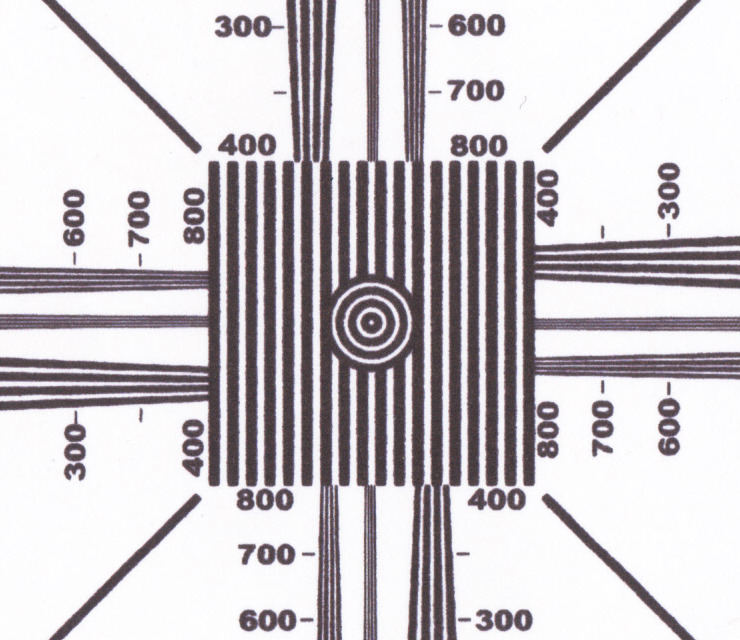 |
|
This full size
crop is 400dpi scan of the test target. Do take note of the
paper texture and 'wavy' straight lines. |
|
The Full Size Crops below allow a comparison of captured detail:
These full size crops are shown actual size.
Distance to Target
was 10 strides, = approximately 9 metres / 29 feet.
Note: Some of
these images are actually larger than the original target.
(Note to self - I should have placed the target much further away!)
|
|
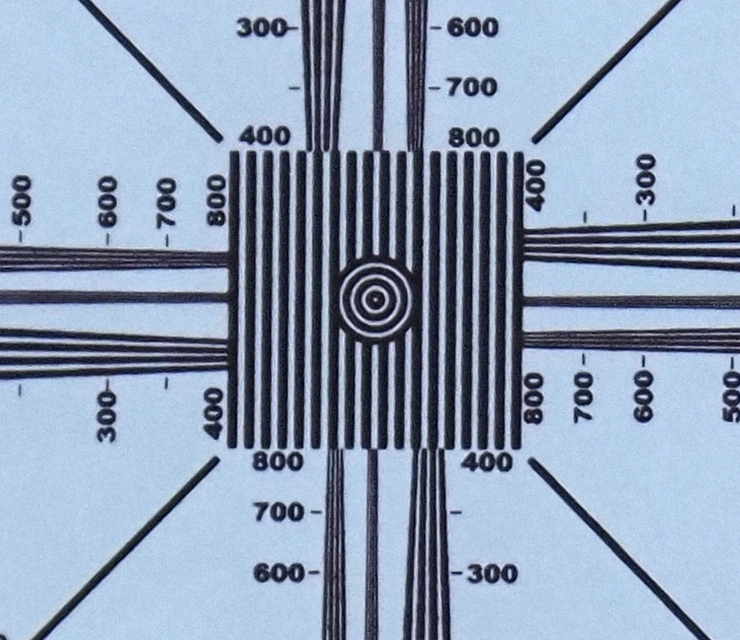 |
|
1a) Above:
PL100-400 'Bare'. |
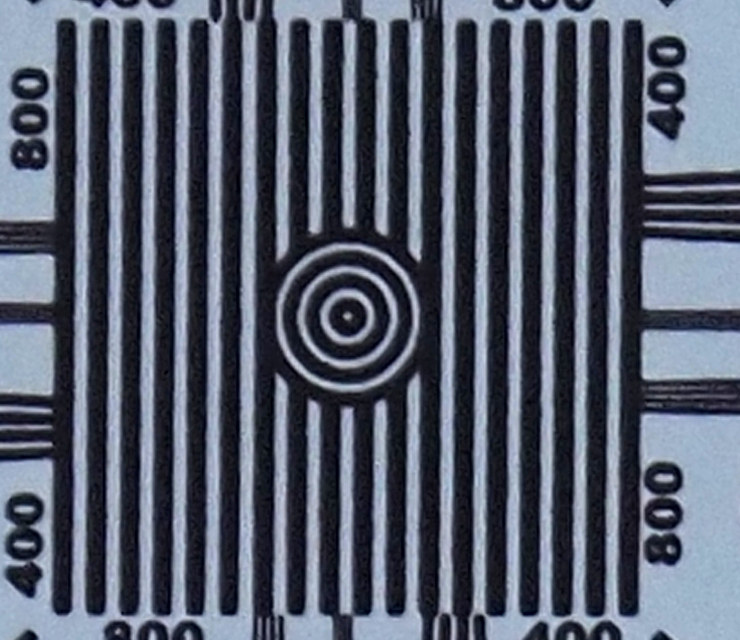 |
|
1b) Above:
PL100-400
+ in camera 2x
Digital Zoom |
 |
|
2a)
Above:
Olympus 75-300 Mk2
'Bare'. |
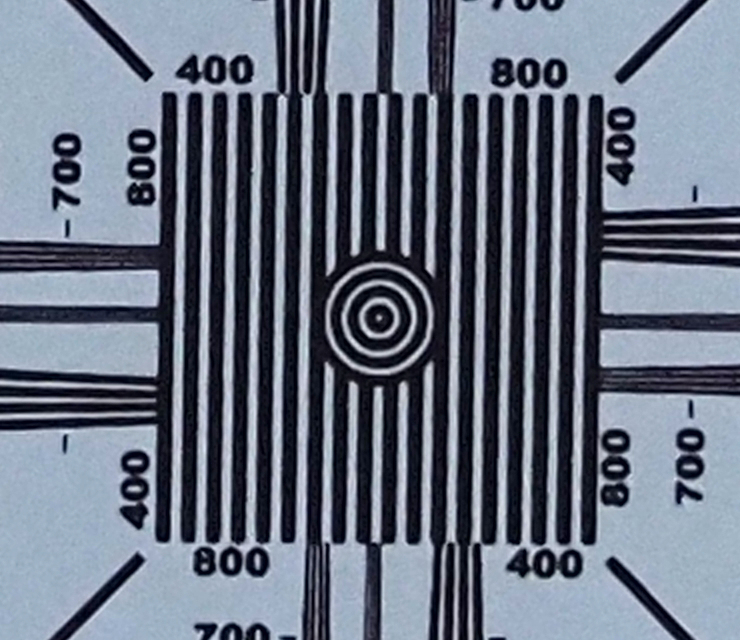 |
|
2b)
Above:
Olympus 75-300 Mk2
+ in camera 2x
Digital Zoom. |
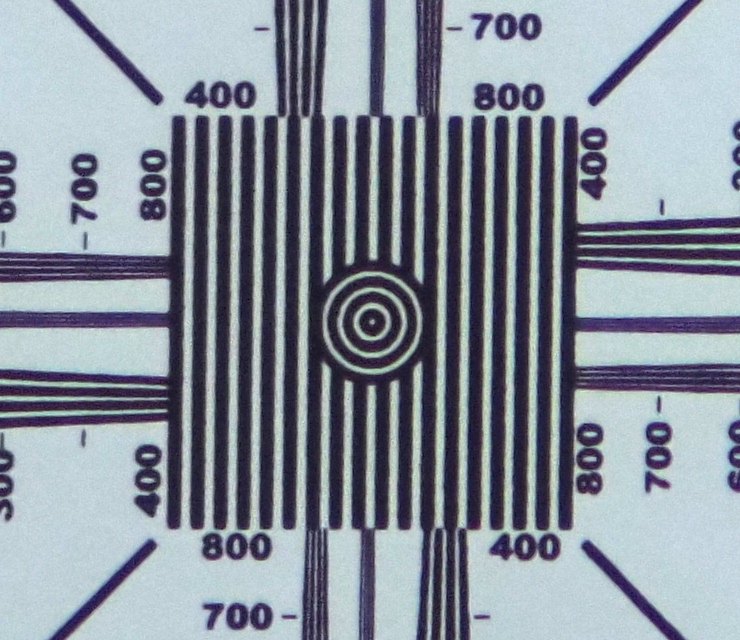 |
|
3a)
Above: Olympus 75-300 Mk2 + Raynox 2020 Pro 2.2x TC.
|
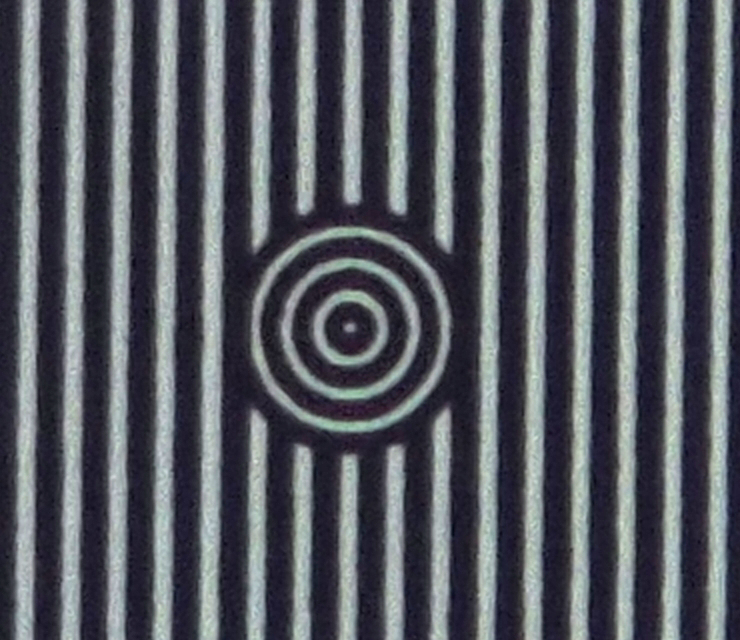 |
|
3b) Above:
Olympus 75-300 Mk2 + Raynox 2020 Pro 2.2x TC +
in camera 2x
Digital Zoom. |
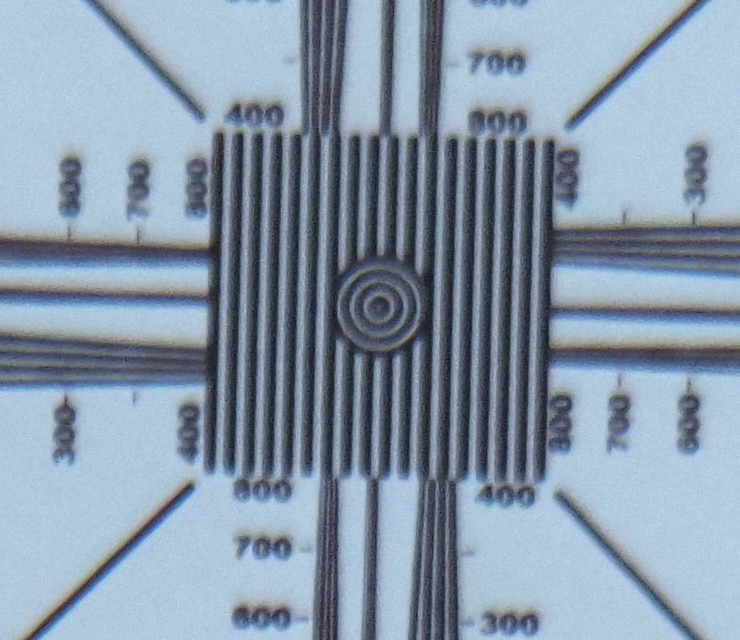 |
|
4a) Above:
Olympus 75-300 Mk2 + Olympus 1.7x TC (using a Thin coupling adapter
ring). |
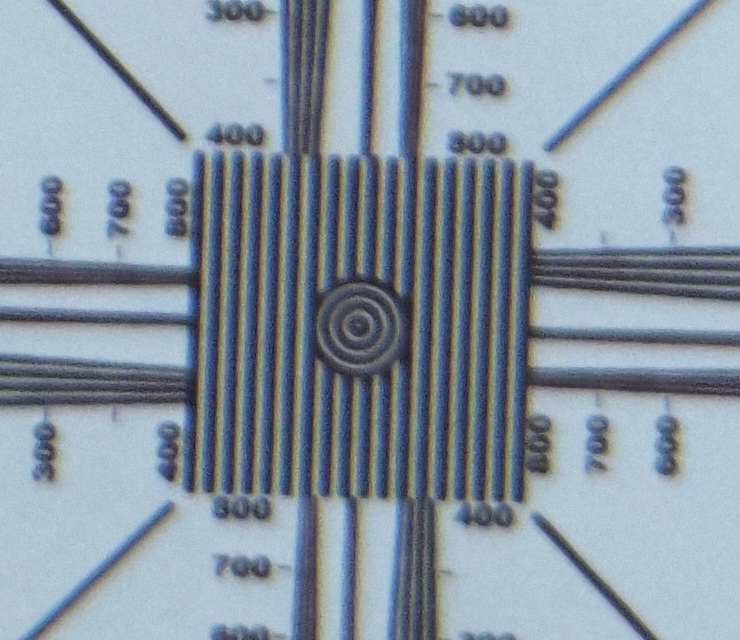 |
|
4b) Above:
Olympus 75-300 Mk2 + Olympus 1.7x TC (using a Fat coupling adapter
ring). |
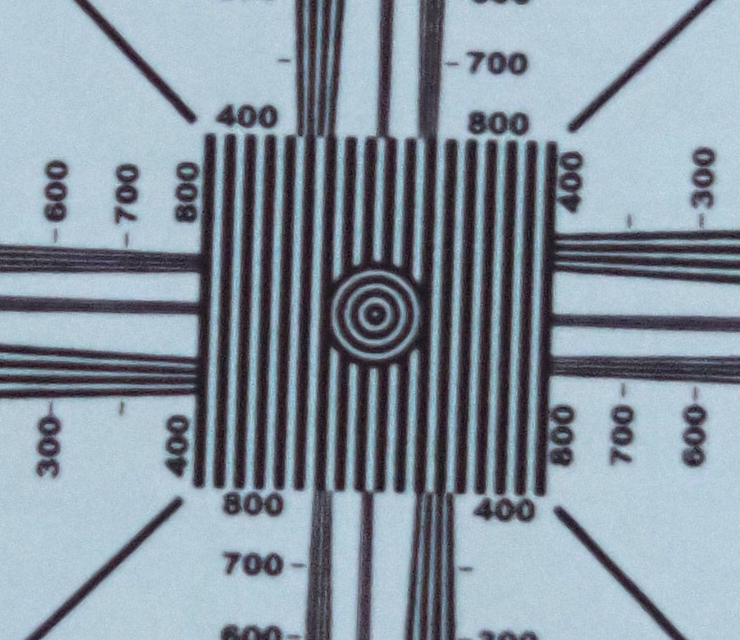 |
|
5a) Above:
Olympus 75-300 Mk2 + Nikon TC-E17ED 1.7x TC. |
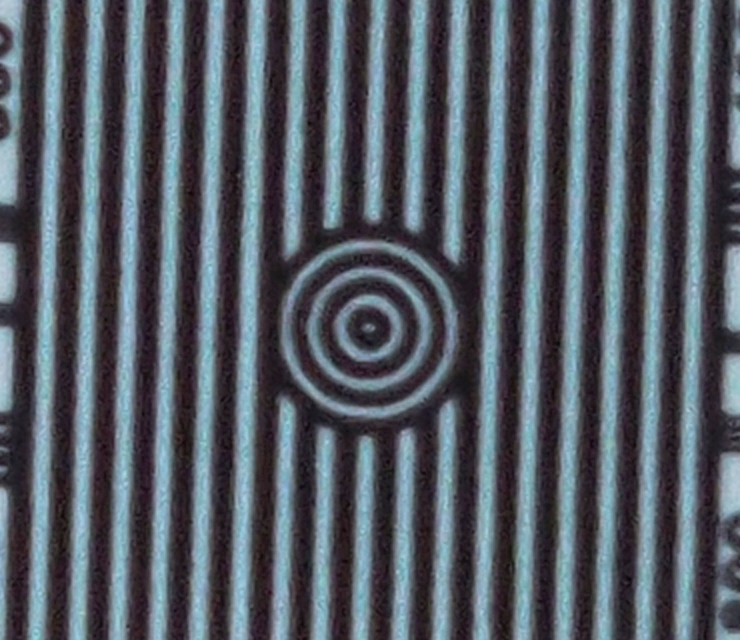 |
|
5b) Above:
Olympus 75-300 Mk2 + Nikon TC-E17ED 1.7x TC +
in camera 2x
Digital Zoom. |
About this test:
It was setup hastily to try and offer some guidance
to an m43 forum member. But the conditions were far from ideal to
provide a definitive test...
* Although it was very dull and overcast, the light
levels did keep varying.
* There was a gentle breeze and although I was patient, there was
possible still some movement, which is why ISO was set high to keep
shutter speed up.
* The camera, long lens, plus heavy teleconverters, excluded the use of
a tripod. Which meant the system had to be rested on a table. However as
the teleconverters all had different front diameters I had to try and
use various packing pieces under the camera to try and align the target
- this was not easy and hence why the full target images show differing
alignments!.
* I should have pre-set the white balance and exposure value properly!
Lessons learned:
This quick & dirty test has piqued my interest and
I would now like to setup a proper controlled trial to test these lens
combinations more thoroughly and for that I now realise I will also need
to use a far better quality test target. And ideally and place it much
further away.
...Now if only I can find some time to plan and
set that up!
BACK to TOP
Article © Adrian Harris
|























